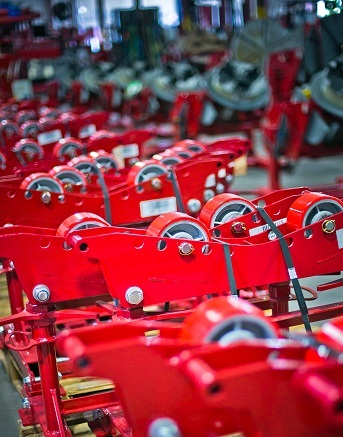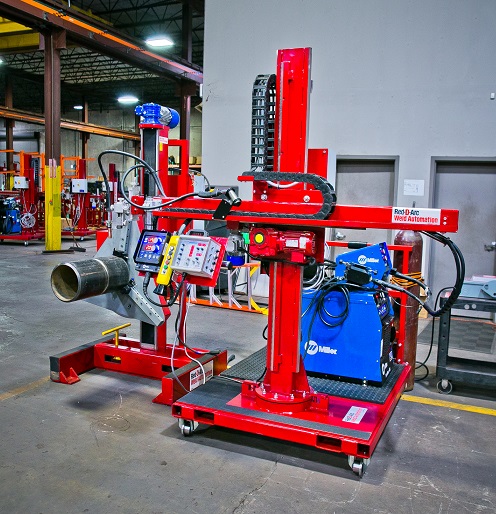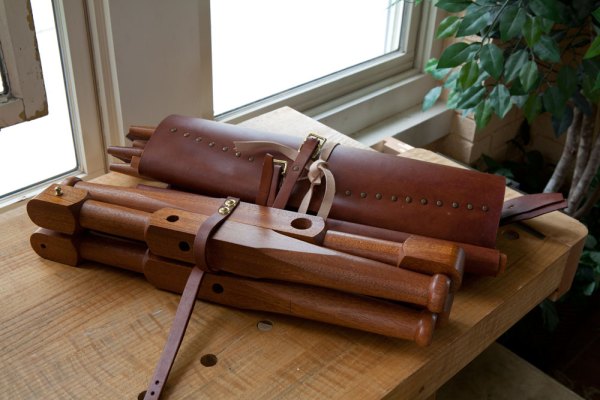Automating the Pipe Welding Process – Red-D-Arc Red-D-Arc
Automating the Pipe Welding Process

Contents
“Welding Pipe” encompasses many applications ranging from small-diameter sanitary tubing to large-diameter pressure vessels. Some applications are more accessible to automate than others, but many difficult-to-automate applications can still be assisted by some degree of mechanical integration into the pipe welding process (mechanization).
Why Automate?
But automation adds complexity to the welding process. Successful automation requires additional equipment, fixturing, and control of manufacturing processes (for example: part geometry and fit-up). In short, automation is not without cost—tangible and intangible.
So why automate?
- Helps improve productivity. Machines can achieve a higher operator factor (more time spent welding versus time spent not welding) and handle higher deposition rates than even a dedicated welder using a handheld semi-automatic welding process.
- Helps improve quality. Mechanization controls the fine motor skills required to produce high-quality welds. This means that fatigue does not become a detractor to weld quality. This also means that newer operators may be able to produce high-productivity high-quality welds.
Both general and specialized methods of mechanization and automation can respond to the challenges of the pipe welding industry with respect to the upfront cost and process control that can be afforded.
Welding Roll Out
Rolling out pipe is one of the first methods commonly employed to help automate the welding process, and doing so can significantly maximize welding productivity. Typical methods of rolling pipe place the pipe “in position ” As with welding plates, welding in position allows the use of high productivity welding parameters since the adverse influences of gravity are minimized.
While evaluating your application, look at pipe-to-flange, pipe-to-elbow, or straight pipe-to-pipe connections, which can be accomplished as subassemblies. Once you have identified these sub-assemblies, consider the following equipment:

- Pipe Stands: The equivalent of jack stands for small-to-medium pipe weldments. Most pipe stands are approximately waist high with adjustments up and down. The stand includes a set of rolls whose distance apart can be adjusted to accommodate pipes of different sizes. Some pipe stands integrate a powered roll into the stand so that a separate welding positioner is not required.
- Pipe Rollers: These are typically used for rolling larger-diameter and heavier pipe assemblies. Much like pipe stands, a single pipe roller features a set of wheels with an adjustable wheelbase. Two or more pipe rollers—at least one of which is powered—are required to cradle the assembly low to the ground.
Achieving the Weave
Oscillation—also known as weaving—is a commonly employed welding technique to achieve wider weld bead width to span a joint, deposit additional weld metal per pass, or combine both. However, weaving properly requires skill to maintain good bead contour and consistency. But even skilled operators can experience fatigue when attempting to maximize welding productivity. Therefore, to recreate the technique of a professional welder, a precision device is required to implement oscillation.

The Process Pipe Cell is a near-turnkey solution for some pipe weldments that implements both work-motion and arc-motion to facilitate welding in-position but with manual welding. Work motion is provided by a welding drop-tilt welding turntable. Arc-motion is provided by an oscillator specially designed for welding. The mechanism of the oscillator is mounted to a welding manipulator so that the torch is supported as it traverses side-to-side across the weld joint. Oscillator, manipulator, and power source controls are mounted at a single location on the welding manipulator away from the weld joint to allow the welding operator to perform many adjustments during and between weld passes without having to leave the control station.
The Small Stuff: Orbital Welding
Orbital welding is true welding automation; with the push of a switch, an operator can fuse two small-diameter pieces of tubing to a level of quality suitable for pressurized and sanitary applications. In addition, automation is attractive for reducing the risk of rework when encountering small diameter pipe/tube since welding becomes increasingly difficult as pipe/tube diameter decreases.
One type of orbital welding system consists of a specialized GTAW/TIG power source and an unconventional welding torch that clamps around the weld joint. After clamping around the joint, a welding head inside the torch performs a full out-of-position revolution around the weld joint to produce a high-quality autogenous weld in an inert atmosphere (note that an internal shielding gas purge may still be required in some applications). The specialized power source simplifies developing a high-quality welding procedure by coming preloaded with parameters (amperage, travel speed, etc.) that can be selected respective to the diameter and thickness being welded.
The Big Stuff: Cladding
The use of welding processes is not limited to simply joining two workpieces. For example, cladding often uses conventional arc welding processes to deposit stainless steel or nickel alloy onto the surface of lower-cost base material to improve the component’s overall performance in corrosive and/or high-temperature environments.
Some systems implement GMAW, SAW, or GTAW. Regardless of the process used, the cladding operation requires making many overlapping passes, sometimes across several weld layers. Low dilution processes and parameters are ideal for minimizing the number of weld layers that may be required. Red-D-Arc supplies a variety of turnkey cladding systems that couple automation with hot-wire TIG. These systems allow the use of high cladding travel speeds, reasonable deposition rates, and low dilution.
Conclusion
While not all applications can be easily automated or mechanized, the variety of equipment available makes it viable for many use-cases in the world of pipe welding. Some options provide great flexibility in how they can be implemented, such as pipe stands and rollers that can accommodate a wide range of pipe diameters.
Other systems are turnkey, such as the Process Pipe Cell. Although more complex, turnkey solutions can automate a more significant portion of the welding process “out of the box.” Contact us today to speak with Red-D-Arc’s automation experts. This specialized team is available to assess the needs of your welding application and help you better understand potential solutions for your application.


Red-D-Arc Welderentals™ an Airgas company rents and leases welders, welding positioners, welding-related equipment, and electric power generators – anywhere in the world. Our rental welders, positioners and specialty products have been engineered and built to provide Extreme-Duty™ performance and reliability in even the harshest environments, and are available through over 70 Red-D-Arc Service Centers, strategically located throughout the United States, Canada, the United Kingdom, France, and the Netherlands, as well as through strategic alliances in the Middle East, Spain, Italy, Croatia, and the Caribbean. From our rental fleet of over 60,000 welders, 3,700 weld positioners, and 3,700 electric-power generators, we can supply you with the equipment you need – where you need it – when you need it.







